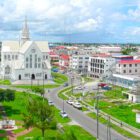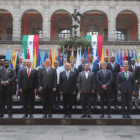Georgetown, Guyana – Like many of its Caribbean counterparts, Guyana has struggled to effectively combat the illegal gun trade/trafficking market. A large part of the problem stems from the country’s inability to deploy adequate resources to police its expansive land borders stretching 2933 kilometers and shared with Brazil, Venezuela, and Suriname.
The Global Organized Crime Index notes that the country’s porous borders make it a virtual paradise for black market dealers seeking an easy transit point for illegal weapons. Over the years, Guyana has seen a flow of illegal firearms from France, Brazil and Venezuela.
For those weapons which manage to settle into the hands of domestic criminal networks, statistics from the country’s Criminal Investigation Department show that there is a preference for arms manufactured in Brazil and the USA. From 2012 to 2022, it was found that the Guyana Police Force removed over 1,097 illegal firearms, many of which were manufactured in those two territories.
Specifically, between the period of 2008 and 2012, an average of 100 illegal guns was being removed from the streets with this trend continuing until 2018. Though there has been a noticeable decline from 2020 to 2022, with an average of 70 guns being seized annually, authorities say they are not the least bit satisfied with this.
To truly increase its gains, Guyana’s attorney general and minister of legal affairs, Anil Nandlall says a new law is in the making that will modernize the nation’s approach to crime fighting.




